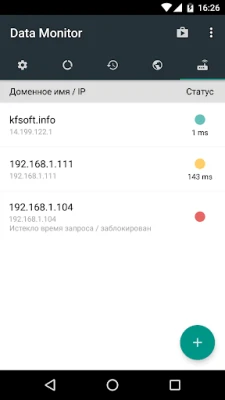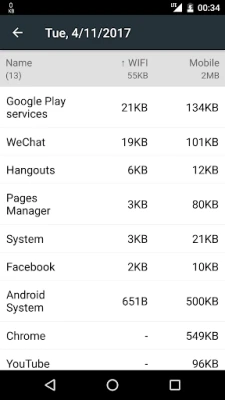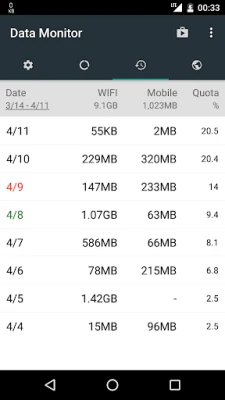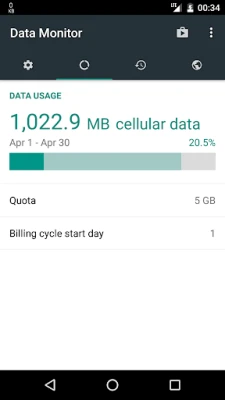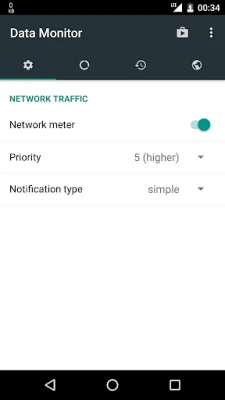
Latest Version
1.0.215
April 27, 2025
KF Software House
Tools
Android
0
Free
info.kfsoft.datamonitor
Report a Problem
More About Data Monitor: Simple Net-Meter
Unlocking the Power of Premium Features: Widgets and Selected Modules
In today's digital landscape, enhancing user experience and functionality is paramount for any website or application. One of the most effective ways to achieve this is through the integration of premium features, particularly widgets and selected modules. These tools not only elevate the aesthetic appeal of your platform but also significantly improve its usability. In this article, we will explore the benefits of utilizing widgets and selected modules, how they can transform your website, and best practices for implementation.
What Are Widgets?
Widgets are small applications or components that can be embedded within a website or application to provide specific functionalities. They serve various purposes, from displaying real-time data to enhancing interactivity. Common examples include weather updates, social media feeds, and interactive calendars. By incorporating widgets, you can offer your users a more engaging experience while also keeping them informed.
The Benefits of Using Widgets
Integrating widgets into your website comes with a plethora of advantages:
- Enhanced User Engagement: Widgets can capture user attention and encourage interaction, leading to longer site visits and lower bounce rates.
- Real-Time Information: Widgets can provide users with up-to-date information, such as news headlines or stock prices, keeping them informed and engaged.
- Customization: Many widgets allow for customization, enabling you to tailor their appearance and functionality to match your brand's identity.
- Easy Integration: Most widgets are designed for easy integration, requiring minimal technical knowledge to implement.
Selected Modules: A Deeper Dive
Selected modules refer to specific components or features that can be added to a website or application to enhance its functionality. Unlike widgets, which are often standalone applications, modules can be more complex and may require additional configuration. They can include features such as e-commerce capabilities, content management systems, or customer relationship management tools.
Advantages of Selected Modules
Incorporating selected modules into your platform can yield significant benefits:
- Increased Functionality: Modules can add advanced features that improve the overall functionality of your website, making it more versatile and user-friendly.
- Scalability: As your business grows, selected modules can be expanded or upgraded to meet evolving needs, ensuring your platform remains relevant.
- Streamlined Operations: Modules can automate various processes, reducing manual work and increasing efficiency.
- Improved Analytics: Many modules come with built-in analytics tools, allowing you to track user behavior and make data-driven decisions.
Best Practices for Implementing Widgets and Modules
To maximize the benefits of widgets and selected modules, consider the following best practices:
1. Choose Relevant Features
When selecting widgets and modules, prioritize those that align with your website's goals and your audience's needs. Conduct thorough research to identify which features will provide the most value.
2. Ensure Compatibility
Before integrating any widget or module, verify that it is compatible with your existing platform. Incompatibility can lead to functionality issues and negatively impact user experience.
3. Optimize for Performance
Widgets and modules can sometimes slow down your website. Optimize their performance by minimizing the number of active features and ensuring they are well-coded. Regularly monitor your site's speed and make adjustments as necessary.
4. Test and Iterate
After implementing new widgets or modules, conduct thorough testing to ensure they function as intended. Gather user feedback and be prepared to make adjustments based on their experiences.
Conclusion
Incorporating premium features like widgets and selected modules can significantly enhance your website's functionality and user experience. By understanding their benefits and following best practices for implementation, you can create a more engaging and efficient platform. As the digital landscape continues to evolve, staying ahead of the curve with these tools will ensure your website remains competitive and relevant.
Embrace the power of widgets and selected modules today, and watch your website transform into a dynamic and user-friendly experience that keeps visitors coming back for more.
Rate the App
User Reviews
Popular Apps










Editor's Choice











